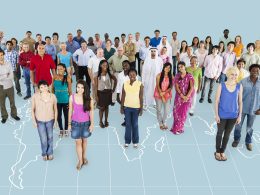A new report from the International Energy Agency (IEA) offers a comprehensive global stocktake of efforts to integrate variable renewables, like solar and wind, across 50 power systems, highlighting key challenges and best practices. As solar PV and wind capacity grow rapidly, governments must act swiftly to ensure these renewable sources are effectively integrated into power systems, or they risk losing significant benefits, the report warns.
Titled Integrating Solar and Wind: Global Experience and Emerging Challenges, the report highlights the accelerated growth of solar and wind power, which more than doubled in capacity between 2018 and 2023. These renewable sources are critical for decarbonisation, contributing to two-thirds of CO2 emission reductions in the electricity sector on the path to net zero by mid-century. However, without proper integration measures, electricity generation from solar and wind could fall 15% short of potential by 2030, diminishing their share of the global electricity mix by five percentage points.
“In recent years, the world has seen a remarkable increase in solar and wind capacity as countries have looked to bolster their energy security and reduce emissions. But they won’t reap the full benefits without stronger efforts to support the integration of these technologies into power systems,” said IEA Director of Energy Markets and Security Keisuke Sadamori.
Sadamori added, “This important new report lays out the challenges ahead, as well as how to tackle them. As global experience grows, so does our understanding of how to keep clean energy transitions moving forward securely.”
The report presents a global review of integration measures across 50 power systems, which collectively represent nearly 90% of today’s global solar PV and wind generation. It includes updated assessments of individual countries using the IEA’s framework for variable renewable energy (VRE) integration, originally introduced in 2017 and revised in 2019.
The analysis shows that in scenarios where countries achieve their energy and climate targets, those with lower shares of VRE in their power systems will account for two-thirds of the generation growth by 2030. These countries can typically expand their renewable deployment without large-scale system overhauls, relying on proven methods like improving asset flexibility and better forecasting, implemented gradually as needed.
However, more complex challenges emerge as solar and wind penetration increases. Leading systems, such as Denmark, Ireland, South Australia, and Spain, have already begun addressing these issues, providing a roadmap for others. Solutions like energy storage and advanced power grid technologies are crucial in managing daily and seasonal fluctuations in renewable energy output.
The report highlights that most technological solutions to these challenges, particularly the need for greater stability and flexibility, are already available or nearing maturity. The key to successful implementation lies in strong policy and regulatory support rather than technological breakthroughs. Nevertheless, integrating higher levels of VRE will require a rethinking of how power systems are traditionally planned and operated, calling for proactive global action as the uptake of renewables accelerates.





















